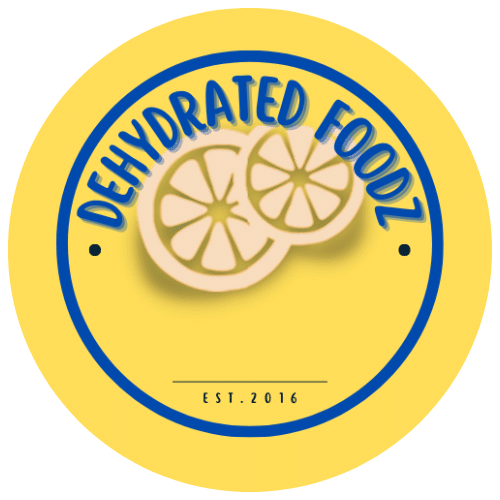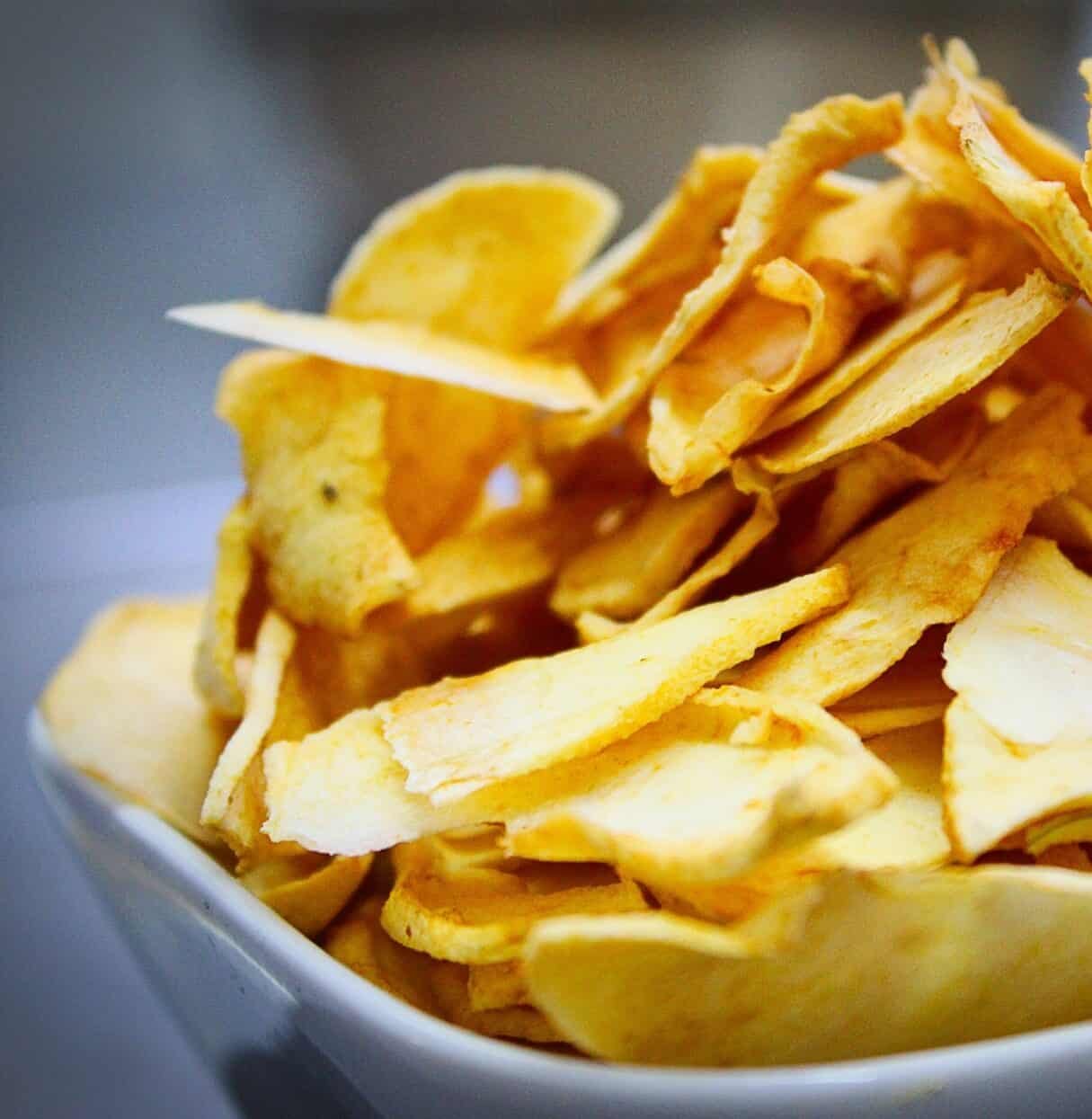Preserving food when you’ve cooked too much or have an excess of summer garden vegetables is an excellent way to save money. Using a Nesco food dehydrator isn’t much different than operating similar devices, but to see the best results, there are a few things you should know.
We’re going to take an in-depth look at how to use the Nesco food dehydrator, from start to finish. Keep reading for more information!
Setting Up Your Nesco Dehydrator: A Step-by-step Guide
First, locate a suitable area in your kitchen to set up your Nesco dehydrator. Look for a well-ventilated spot away from the direct sunlight. Once you’ve selected your location, it’s time to unbox this powerful food preservation tool.
Inside the box of your Nesco food dehydrator, you’ll find the main unit, dehydrator trays, a top cover, and a detailed user manual for guidance. Begin by giving each component a thorough wash before use. This ensures any manufacturer residues are removed, guaranteeing that your first batch of dehydrated food is as clean and flavorful as possible.
- Detach the dehydrator trays from the main unit and gently wash them in warm soapy water. Do not use abrasive cleaners or tools that can scratch the trays. Rinse thoroughly and let them air-dry before installation.
- Clean the main unit using a damp cloth, making sure to get into all the little notches and crevices. Avoid submerging the main unit in water as this might damage the electric components.
- The top cover can be cleaned in the same manner as the trays but it is generally enough to wipe it with a damp cloth.
After everything is clean and dry, it’s time to stack the trays on the main unit. Each tray should fit easily into another, creating a stacked tower. The Nesco dehydrator does not have a set number of trays that must be used at a time. Whether you’re drying a small or large batch, the design ensures even drying each time. Once the trays are stacked, place the top cover to finish the assembly.
And there you have it! Now you know how to set up your Nesco food dehydrator. The last step is to plug the dehydrator into a suitable electrical outlet, and you’re ready to start the fascinating process of food dehydration.
NOTE: Always ensure your Nesco food dehydrator is clean and dry before and after each use to prolong the lifespan of the machine and to maintain the quality of your dehydrated food.
Now that your Nesco dehydrator is set up, let’s move on to discussing the basics of operating it.
How to Use Nesco Food Dehydrator
Preparation of the Nesco Food Dehydrator
First, you want to place your dehydrator on a sturdy countertop or table, away from any water. Stack the needed trays into the unit, place the cover on top, and insert the blower, locking it into place.
Finally, plug the cord into an electrical socket, turn the power on, and begin dehydrating your food.
Prepare the Food and Utensils Needed
There are numerous recipes available for dehydrating food and the types of produce and meat are entirely up to you.
However, you should know that items marinated in alcohol should be avoided and using vegetable oil to prevent sticking is not advised. Also, cut away any bruising, defects, and wash away insects or dirt.
As you learn your machine, you can experiment with the thickness of food slices, whether you choose to pretreat them, and the techniques you prefer.
You will need to clean all utensils and surfaces that will come into contact with food that is to be dehydrated. Do this with a mixture of bleach, detergent (dish soap works fine) and water. This prevents any contamination from occurring.
Do This, Not That
When setting up food to be dehydrated, be sure that the slices don’t overlap. Overlapping will cause the food to take twice as long to dry.
Allow food to dry thoroughly before removing the slices or adding more to the trays. Adding more food to a partially dried batch will increase the drying time.
If you have two Nesco food dehydrators, after the food has dried for a while, you can combine the contents into one unit and begin a third batch. Just ensure that your food is never left partially dried or that power is not turned off before the process is complete. This will ensure the safety of your food!
Get to Drying!
The last few steps to successfully using your Nesco food dehydrator include proper labeling. Although this may seem silly, it can help you identify which foods were dried and should be consumed first which means minimal nutrient loss.
Other than these basic necessary steps, you have complete creative control over which foods, treatments, seasonings, combinations and recipes you use! Get creative and enjoy seeing less food waste in your home.
Drying Temperatures: The Ideal Nesco Settings for Different Types of Foods
If there’s one aspect that distinguishes the Nesco food dehydrators from others, it’s the flexibility in temperature range they offer. Knowing how to use a Nesco dehydrator effectively means understanding which temperature is best suited for which type of food. To help you out, here’s an in-depth guide to using your Nesco dehydrator’s temperature controls like a pro.
Now, every model of Nesco dehydrators is a tad different, but most feature a temperature range from 90 to 160 degrees Fahrenheit. Your choice of temperature will largely depend on what you’re dehydrating. For instance:
Food Type Recommended Temperature:
- Herbs and spices 90-100°F
- Fruits 125-135°F
- Vegetables 125-135°F
- Meat and fish (for jerky) 160°F
It’s absolutely necessary to remember, the temperature guidelines might not always be exact due to variations in thickness and moistness of the slices or the particular model of your Nesco dehydrator. It can take anywhere between a few hours to a couple of days to completely dehydrate food, depending on the temperature and moisture content.
Dehydrating at too high of a temperature can “case harden” your food, which means it forms a crust on the outside, yet leaves moisture inside — a recipe for spoilage. The key is to dehydrate at lower temperatures for prolonged periods, so that the food dries evenly without getting cooked.
Making the Best Use of Your Nesco Dehydrator Temperature Control
When it comes to making the best use of your Nesco food dehydrator, remember that not all heat is created equal. If you’re dehydrating different types of foods simultaneously, gear the temperature towards the highest setting required for any given item. This ensures no food is under-processed. Worst case scenario, certain items might be over-dried, but better safe than sorry, especially when it comes to dehydrating meat.
You can also save money by running your Nesco dehydrator at night, capitalizing on off-peak energy rates. Just remember to set a timer so you don’t forget your delicious fruit leather or beef jerky in the machine. Now that you know how to use Nesco dehydrator’s temperature settings for different foods, you are one step closer to being a dehydrating pro.
Of course, the more you use your Nesco food dehydrator, the better understanding you’ll have of how long and at what temperatures different foods need to be dehydrated. It’s a fun process of experimentation and reveling in the joy of creating your own preserved snacks and ingredients. Make sure you invest in the right model to enhance this experience even further.
Using the Nesco Dehydrator for Large Batches: Tips and Tricks
If you’ve purchased a Nesco dehydrator with a larger capacity, you’re probably excited to tackle bigger jobs. How do you use a Nesco dehydrator for large batches, you might ask? It’s all about maximizing your machine’s efficiency without sacrificing the quality of dehydrated food.
Stacking and Rotating Trays Effectively
Learning how to stack and rotate your dehydrator trays can contribute significantly toward making the most out of your Nesco dehydrator. Each model has a recommended maximum number of trays, so be sure to check the product manual for your specific model.
When dehydrating large batches, it’s crucial to remember that not all trays will dry at the same rate due to the machine’s airflow pattern. As such, always rotate your trays halfway through the recommended drying time. This practice ensures even drying for all your food items, ultimately enhancing the overall flavor and quality.
Preparing Your Foods
Before dehydrating large batches, prepare your food items appropriately. Ensure all your fruits, meats, and vegetables have been sliced consistently. Inconsistent thickness can lead to uneven drying times and can compromise the end product. Therefore, take your time to cut your foods into uniform slices.
Keeping Track of Drying Times
Not all foods dry at the same rate. Keep an eye on your Nesco dehydrator during the dehydration process. You don’t want your beef jerky to become too hard or your kale chips to retain too much moisture. It’s always better to check on your foods periodically rather than forget about them for hours—dehydration is a delicate process.
Using Mesh Sheets and Solid Trays
Using the right accessories for your Nesco dehydrator can make a significant difference when dehydrating large batches. For example, mesh sheets are ideal for drying smaller food items or herbs that might fall through dehydrator trays, while solid trays are perfect for making fruit leathers or drying sauces and purées.
Remember, the ultimate goal is to fully dehydrate your food while preserving all the flavors. With these tips in mind, you’ll become adept at making the most of your Nesco food dehydrator, even with large batches.
Where Can I Find The Nesco User Manual?
The Nesco Food Dehydrator comes with a user manual that provides essential information about using the product for optimal results. The user guide is included in the box when you purchase your dehydrator and can be found online on the manufacturer’s website.
The Nesco user guide contains important instructions, including safety guidelines and instructions on how to use the appliance. It also provides valuable tips for getting the best results when drying different types of food.
The user manual includes detailed instructions on preparing, loading, and setting up your dehydrator for optimal performance. It explains in detail which temperature ranges work best with different foods and special considerations for preserving certain food items. Additionally, the guide includes troubleshooting instructions and tips on cleaning and maintaining your dehydrator for long-term use.
Following the instructions in the Nesco manual ensures that your Nesco Food Dehydrator is used safely and efficiently. This will help you get the most out of your product and ensure you take full advantage of all its features.
Product information and customer service resources are also included in the Nesco handbook. So whether you’re looking for something specific or want to learn more about using the dehydrator, this guide can help.
Can You Buy Extra Dehydrator Trays?
Yes, you can purchase additional dehydrator trays to expand the capacity of your Nesco Food Dehydrators. These trays fit all standard-sized Nesco models. In addition, you can find extra trays on the manufacturer’s website or at any major retailer that carries kitchen appliances.
Add A Trays are great accessories to your Nesco Dehydrator, allowing you to expand the capacity and maximize your drying efficiency. With extra trays, you can dry a range of different foods at once with no need to wait between cycles. It’s a great way to increase output for large batches or preserve food for long-term storage.
If you enjoyed this article but are now in need of recipes, take a look at a few of our favorite ways to make beef jerky!

